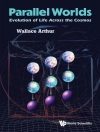Circuits overloaded from electric circuit analysis?
Many universities require that students pursuing a degree in
electrical or computer engineering take an Electric Circuit
Analysis course to determine who will 'make the cut’ and continue
in the degree program. Circuit Analysis For Dummies will
help these students to better understand electric circuit analysis
by presenting the information in an effective and straightforward
manner.
Circuit Analysis For Dummies gives you clear-cut
information about the topics covered in an electric circuit
analysis courses to help further your understanding of the subject.
By covering topics such as resistive circuits, Kirchhoff’s laws,
equivalent sub-circuits, and energy storage, this book
distinguishes itself as the perfect aid for any student taking a
circuit analysis course.
* Tracks to a typical electric circuit analysis course
* Serves as an excellent supplement to your circuit analysis
text
* Helps you score high on exam day
Whether you’re pursuing a degree in electrical or computer
engineering or are simply interested in circuit analysis, you can
enhance you knowledge of the subject with Circuit Analysis For
Dummies.
Spis treści
Introduction 1
Part I: Getting Started with Circuit Analysis 5
Chapter 1: Introducing Circuit Analysis 7
Chapter 2: Clarifying Basic Circuit Concepts and Diagrams 15
Chapter 3: Exploring Simple Circuits with Kirchhoff’s Laws25
Chapter 4: Simplifying Circuit Analysis with Source Transformation and Division Techniques 41
Part II: Applying Analytical Methods for Complex Circuits 65
Chapter 5: Giving the Nod to Node-Voltage Analysis 67
Chapter 6: Getting in the Loop on Mesh Current Equations 83
Chapter 7: Solving One Problem at a Time Using Superposition95
Chapter 8: Applying Thévenin’s and Norton’s Theorems 113
Part III: Understanding Circuits with Transistors
and Operational Amplifiers 131
Chapter 9: Dependent Sources and the Transistors That Involve Them 133
Chapter 10: Letting Operational Amplifi ers Do the Tough Math Fast 155
Part IV: Applying Time-Varying Signals to First- and Second-Order Circuits 173
Chapter 11: Making Waves with Funky Functions 175
Chapter 12: Spicing Up Circuit Analysis with Capacitors and Inductors 193
Chapter 13: Tackling First-Order Circuits 211
Chapter 14: Analyzing Second-Order Circuits 233
Part V: Advanced Techniques and
Applications in Circuit Analysis 253
Chapter 15: Phasing in Phasors for Wave Functions 255
Chapter 16: Predicting Circuit Behavior with Laplace Transform Techniques 273
Chapter 17: Implementing Laplace Techniques for Circuit Analysis295
Chapter 18: Focusing on the Frequency Responses 313
Part VI: The Part of Tens 335
Chapter 19: Ten Practical Applications for Circuits 337
Chapter 20: Ten Technologies Affecting Circuits 341
Index 345
O autorze
John M. Santiago Jr., Ph D, served in the United States Air Force (USAF) for 26 years. During that time, he held a variety of leadership positions in technical program management, acquisition development, and operation research support. While assigned in Europe, he spearheaded more than 40 international scientific and engineering conferences/workshops.












